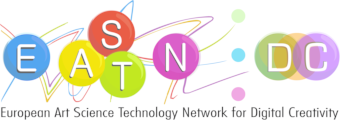In my submission, I will explain the artistic means that helped me achieve a palimpsest-image using new technologies. Summary: The image-palimpsest has its roots in photomontage. There was a reflection and preparation of the elements from the artistic heritage. I had to use the editing tools on the computer, experimenting with the possibilities of the image, which gave me different results. There was an infinite number of attempts between the failed palimpsest images and the successful ones. The final result is the fruit of a multitude, even an infinity of a translucent accumulation of images. It is also a heap of photos-memories, paintings, watercolors, sketches, writings which prospered the image-palimpsest. In addition, the becoming image-palimpsest, is a composite concept that I invented, on the one hand following the readings of Marcel Proust, on the other hand, I was able to invent this term following a plastic practice observed through the technique of photomontage. Technically, the image-palimpsest is the result of the photomontage. In the composition which, like it has revealed itself through technique, but also and above all drawings from history and references from thinkers around the question of editing and making the image . An image that has undergone several transformations, and has metamorphosed into an image palimpsest. By having this conscious and unconscious posture of the image-palimpsest, later, the moving image in the form of a video sequence. I come back to the reflections of Gilles Deleuze and Andrei Tarkovski, on the time-image and the movement-image in cinema, with reference to the time-image and the movement image that I had the idea of. '' create the palimpsest-image of it which covers time, space and subsequently movement. The image palimpsest treats the image in its broadest sense, there will be no limitation on the choice of the starting image, since all images are in the order of memory. This is a real experience. It is a real recomposition to serve my practice developed from previously chosen, shredded and reconstituted elements. The way to make plastic was not easy, because what I imagined is still not practically feasible. By handling the editing tools, I managed to create three kinds of plastic readings using a transparent support.The first method is done by simply reading the plastic elements. Each used element is put on a transparent support as being a work of art. full fledged by itself. The second consists in superimposing the images one on top of the other, thus, the reading is done starting from the material superposition of the joined images. The third procedure, superimpose the three images which are on the same support, therefore a compactpalimpsest image whose reading is done on an opaque support. The three ways of doing things immediately gave birth to the image-palimpsest. In the works below, I propose two kinds of plastic readings as has been explained, the third will be exposed. There will be an exhibition of the palimpsest images as well as the assembly steps. The synthesis will be rendered in the form of a video-audio sequence, introducing the concept of silence.
Back
“Reflections: Bridges between Technology and Culture, Physical and Virtual”
is supported by:






